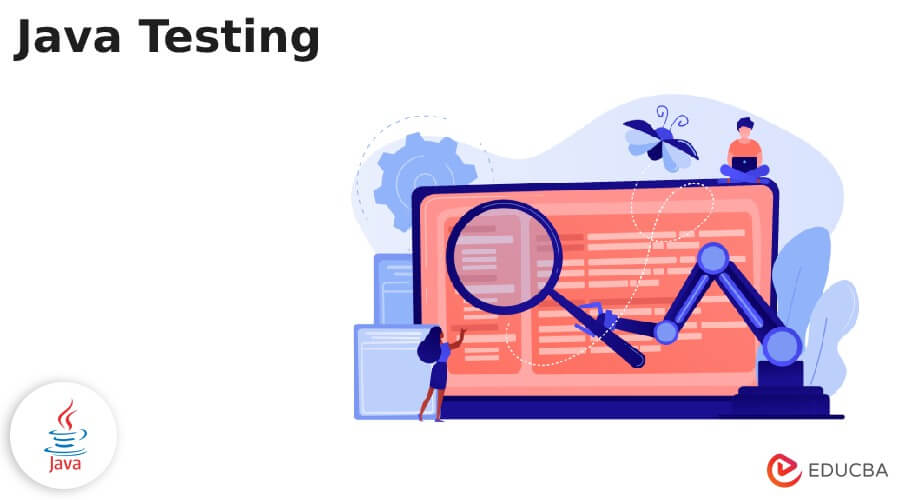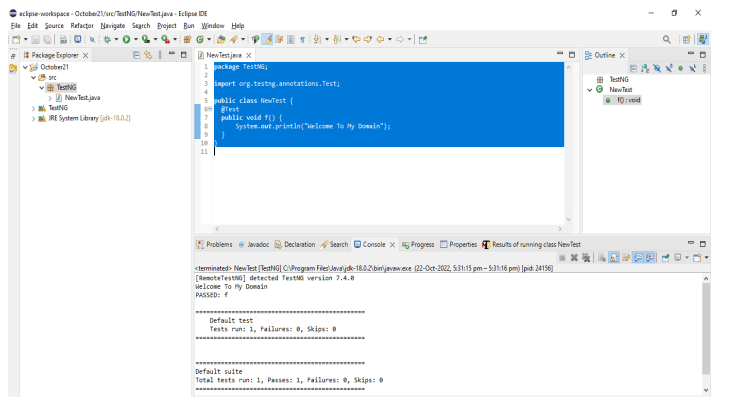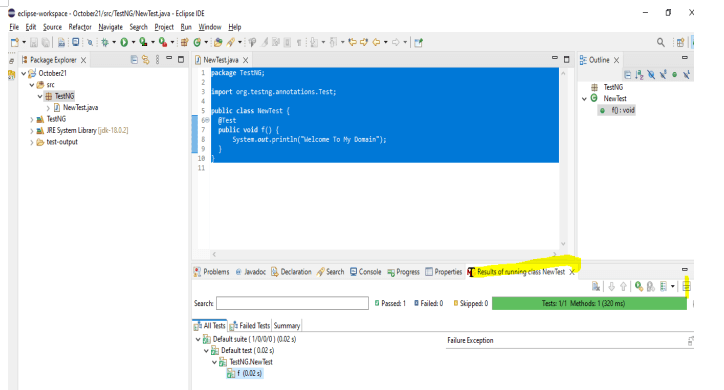Updated September 30, 2023
Introduction to Java Testing
Java testing is similar to testing every component of an application with comprehensive and functional test cases. They have already been provided and sound exactly like a Junit test case for evaluating and creating test scenarios for all functionality. Java testing is similar to testing several situations or actions to confirm the expected outcome for a simple framework to create repeated Junit tests.

Key Takeaways
- Every application component may be tested using the comprehensive and functional test cases provided by Java testing.
- Because Java uses JVM, it is a platform-independent language.
- Testing is crucial since it identifies flaws and errors before the client receives the software, ensuring its quality.
- All tests should run once the code is written, and the code should succeed.
- Tests should run when a new code is added to ensure nothing is broken.
What is Java Testing?
The code size in Java might vary depending on the application’s functionality. If the user needs to confirm the minimal time to perform, the functionality and the code must be shorter and easier to test. However, the code will be longer and more difficult to do the test if a user wants to perform the application to have more features. Many default testing tools are available in the market for testing the Java code, like Junit, Selenium, etc. Testing will be performed through automation tools since it has several web components for serving the MVC and other design patterns.
How does Java Testing Work?
Java has some benchmarks to measure the application performance and the efficiency of the developer’s code. It has integration to check the compatibility and consistency of data groups or modules from the whole set of applications. To identify the protocol for testing the application suite, which described the different areas in mutation objects to identify the missing test cases. The database is an essential schema for mapping the security and other application performance. The testing can be done for more seasoned developers. The code’s purpose frustrates programmer beginners as fixing tests and other necessities takes time.
The JUnit and other test cases exactly mapped the sounds like measuring and functionality of the user actions, which triggered specific scenarios. Junit and other frameworks and test codes are not the same, but here Junit is a simple test framework for writing the application code with repeatable tests. Whenever we install or use frameworks, it is necessary to install Java for the machine.
Java Testing Framework
A set of rules called the Java testing framework must be followed while writing Java test scripts for software quality assurance. These guidelines or regulations specify the basic format of the tests and the overall testing plan.
It creates or formulates a structured or directed blueprint for the full procedure and fulfills an effective approach for testing the program. A Java testing framework may contain rules such as Test Data Information, Scripting Guidelines, Test Results, Repositories, etc.
An effective Java testing framework has the following characteristics or advantages:
- Cost-Effective: A Java testing framework can aid a project in cost management by minimizing waste or overspending from allocating resources to issues that may develop because of subpar project management techniques.
- Efficiency in Time: By creating test cases that are structured, directed, and supported by rules and guidelines, time is saved while still ensuring excellent quality control.
- Greater Automation: By effectively automating the entire process, the use of test frameworks ultimately aids in lowering the participation of human resources in the testing environment.
Having established what testing frameworks are, let’s examine the Best Java Testing Frameworks for Quality Assurance Experts Using Java Programming Language.
Example:
Code:
package TestNG;
import org.testng.annotations.Test;
public class NewTest {
@Test
public void f() {
System.out.println("Welcome To My Domain");
}
}Output:

Here we have used the TestNG framework to perform the automation on the user inputs. Likewise, we can add n number of test cases written by languages like Java, XML, etc. We can open the TestNG report in web view by clicking this button.


Java Testing Developer
No matter how much programmers and programming languages advance, humans write flawed code. This article may serve as a more practical introduction for testing the software, and it also acts as software developers. The lessons naturally divide into different categories like static analysis and dynamic testing, and starting with Junit, the dynamic portion progresses through test-first development, certain niche topics like the testing of persistence and mock objects, and the behavior-driven development or BDD approach.
In development, they have different tests like unit tests, integration tests, functional tests, end-to-end tests, acceptance tests, smoke, and performance tests. Some tools are essential to testing and developing applications by programmers. JUnit, Mockito, TestNG, Selenium Spring test, Cucumber, etc.
Java Testing Problem Resolving
To troubleshoot the memory leaks for using the jdk mission control and identify memory leaks for debugging the codes and memory leaks. With the help of Java and other tools like cmd, be familiar with the outofmemoryError Exception. Further, Investigate the application crash and, rather than an out-of-memory error, find the programming language like Java and the code leaks to obtain a heap histogram. To identify a native code leak for diagnosing the problems and involve the possible memory leaks, the diagnostic tools for monitoring the Java development kit to perform the APIs.
- Creating the wrong kind of tests.
- Missing the mark on test doubles.
- Test names don’t convey purpose.
- Often debugging tests.
- Letting test code go bad.
The above points are more important and necessary to rectify and avoid issues during testing.
FAQs
Q1. What is Java testing?
Answer:
The component of the application will test using comprehensive and functional test cases.
Q2. How is Java used for testing purposes?
Answer:
Frameworks, plugins, APIs, and libraries that support Java for test automation are widely accessible and plentiful. Because Java uses the JVM, it is a platform-independent language.
Q3. Mention the different types of Java testing tools.
Answer:
- Junit
- Selenium
- TestNG
- Cucumber
- Mockito
Conclusion
The researchers and Java programmers will write their code and think about the logic for implementing the applications. Learning to program will be a lifelong endeavor, whether the seasoned professional developer or a complete novice, to test the application scenarios with different test cases and use other Java and language-based tools to complete the tasks.
Recommended Articles
This is a guide to Java Testing. Here we discuss the introduction, working, framework, developer, and Java testing problem resolution. You may also have a look at the following articles to learn more –


